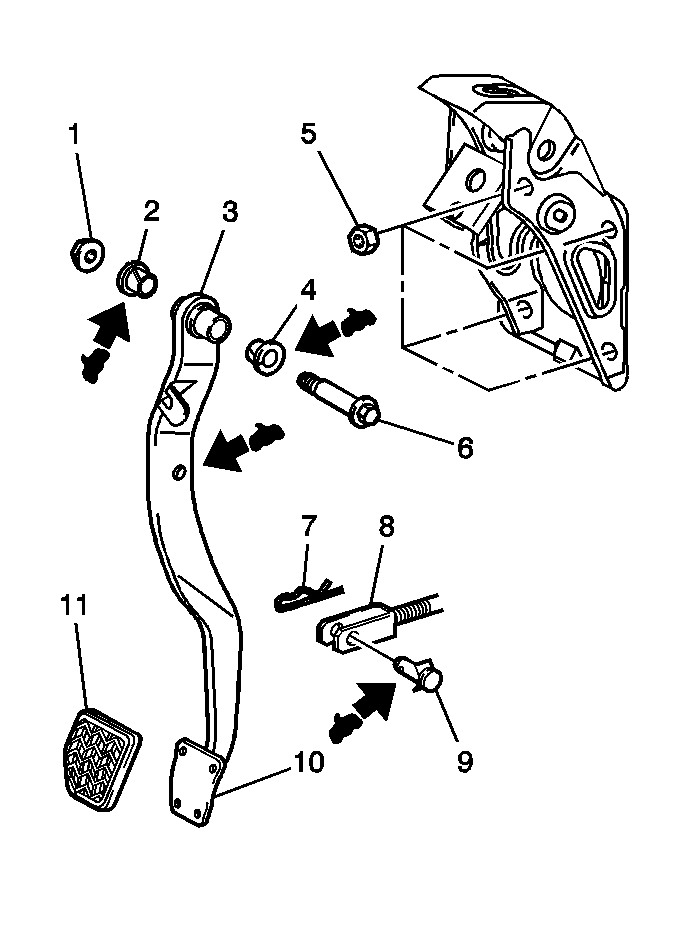For 1990-2009 cars only
Removal Procedure
- Disconnect the negative battery cable.
- Disconnect the stoplamp switch connector.
- Remove the clip (7) from the push rod clevis pin (9).
- Remove the push rod clevis pin and the washer from the push rod clevis (8).
- Remove the push rod clevis from the brake pedal (10).
- Remove the 4 bracket nuts (5).
- Remove the shaft bolt (6) and the nut (1).
- Remove the pedal from the bracket.
- Remove the bushings (2, 4) from the pedal.
- Remove the cover (11) from the pedal.

Caution: Unless directed otherwise, the ignition and start switch must be in the OFF or LOCK position, and all electrical loads must be OFF before servicing any electrical component. Disconnect the negative battery cable to prevent an electrical spark should a tool or equipment come in contact with an exposed electrical terminal. Failure to follow these precautions may result in personal injury and/or damage to the vehicle or its components.
Installation Procedure
- Install the cover (11) to the brake pedal (10).
- Apply Lubriplate lubricant, GM P/N 1052196 (Canadian P/N 5264008), or the equivalent, to the bushings (2, 4).
- Install the bushings to the pedal.
- Install the pedal and the shaft bolt (6) to the bracket.
- Install the nut (1) to the shaft bolt.
- Install the bracket and the 4 nuts to the vehicle.
- Apply Lubriplate lubricant, GM P/N 1052196 (Canadian P/N 5264008), or the equivalent, to the push rod clevis pin (9) and to the clevis pin hole in the pedal.
- Install the push rod clevis pin and the washer in order to retain the push rod clevis to the pedal.
- Install the clip (7) in order to retain the clevis pin to the pedal.
- Connect the stoplamp switch connector.
- Connect the negative battery cable.
- Measure the brake pedal travel. Adjust if necessary. Refer to Brake Pedal Travel Measurement and Inspection .

Notice: Refer to Fastener Notice in the Preface section.
Tighten
Tighten the bolt and the nut to 37 N·m (27.3 lb ft).
Tighten
Tighten the nuts to 12.7 N·m (112.4 lb in).
